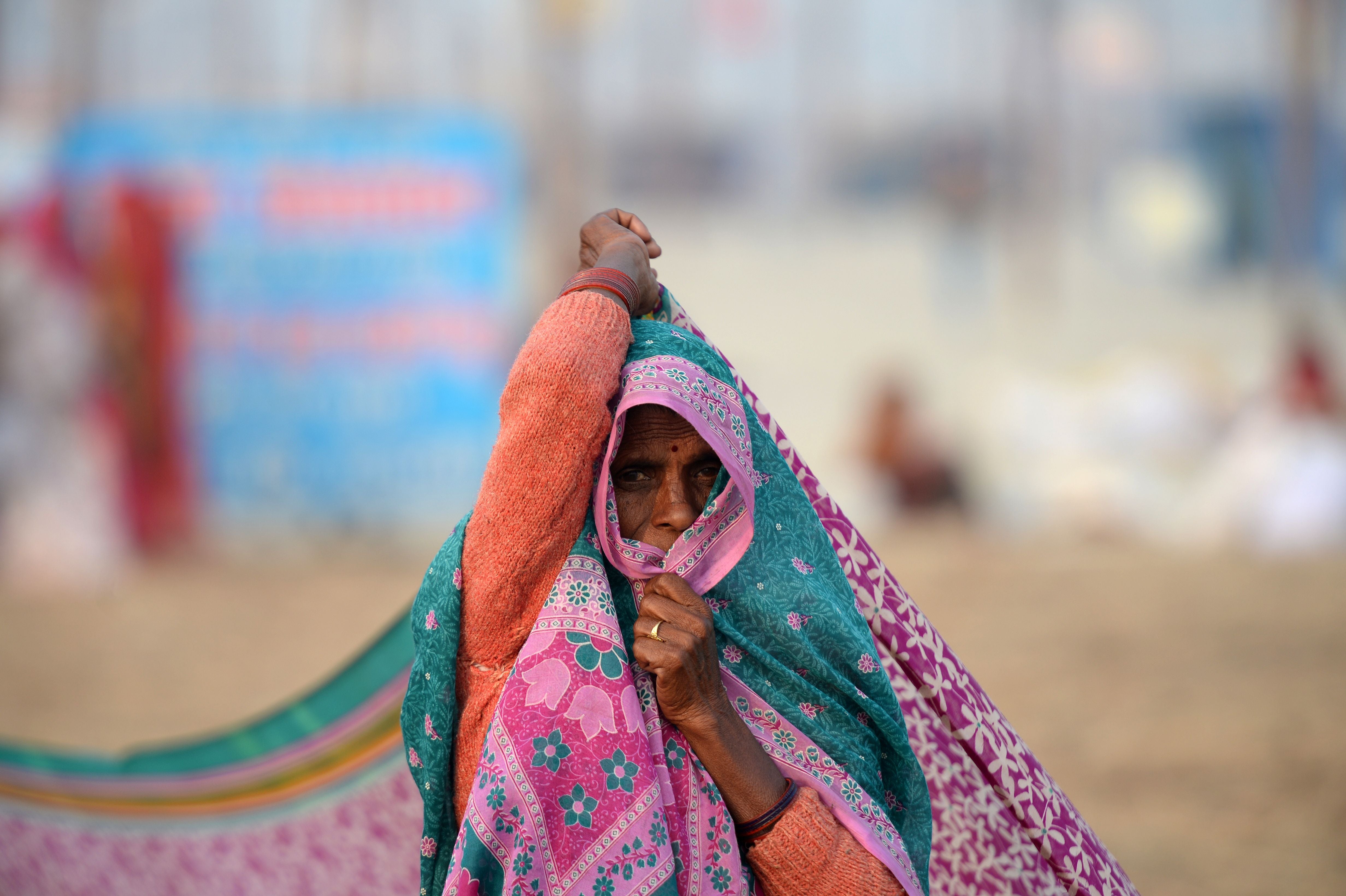Your support helps us to tell the story
From reproductive rights to climate change to Big Tech, The Independent is on the ground when the story is developing. Whether it’s investigating the financials of Elon Musk’s pro-Trump PAC or producing our latest documentary, ‘The A Word’, which shines a light on the American women fighting for reproductive rights, we know how important it is to parse out the facts from the messaging.
At such a critical moment in US history, we need reporters on the ground. Your donation allows us to keep sending journalists to speak to both sides of the story.
The Independent is trusted by Americans across the entire political spectrum. And unlike many other quality news outlets, we choose not to lock Americans out of our reporting and analysis with paywalls. We believe quality journalism should be available to everyone, paid for by those who can afford it.
Your support makes all the difference.
Tying the waist cord of the saree underskirt tightly may lead to what has been dubbed as “petticoat cancer”, doctors warn in a new study.
The research, published on Tuesday in the journal BMJ Case Reports, describes the strange condition in two women with this type of malignancy.
Doctors found that the continued pressure and friction on the skin caused by tightly tying the petticoat cord in some cases could lead to chronic inflammation, ulceration, and, in some cases, progression to skin cancer.
This phenomenon, previously described as “saree cancer,” is actually due to the tightness of the waist cord, say researchers, including Bhushan Madke from the Jawaharlal Nehru Medical College in Maharashtra, India.
The latest study describes the case of a 70-year-old woman who sought medical help due to a painful skin ulcer on her right flank.
The woman’s skin in the area surrounding the right flank had lost its pigmentation and her wound wouldn’t heal for over 18 months.
She said she wore a petticoat underneath her saree which was tightly tied around her waist.
Samples taken from this part of the woman’s body revealed that she had what’s called a “Marjolin ulcer” – a type of “rare but aggressive” skin cancer, researchers say.
“I have been wearing a Nauvari saree, tightly wrapped around my waist, for most of my adult life. Six years ago, I noticed a small area of depigmentation on my right flank, which I initially dismissed as a minor skin issue,” the 70-year-old said.
Over time, she said the spot turned into a “non-healing ulcer”, causing her concern and discomfort.
“The discomfort became a part of my daily life, impacting my ability to perform routine tasks,” the woman said.
“When I finally consulted a dermatologist, I was diagnosed with skin cancer, mostly exacerbated by the chronic friction and pressure from the tightness of the saree tied around my waist,” she said.
In another case, doctors describe a woman in her late 60s with an ulcer on her right flank that wouldn’t heal for 2 years.
She too wore a saree every day, a traditional type called a “lugda” tied very tightly around the waist without an underskirt.
This woman too was found to have Marjolin ulcer, which had spread to one of her lymph nodes in her groin.
The cancer type develops in chronic burn wounds, non-healing wounds, leg ulcers, tuberculous skin nodules, and in scars developing from vaccination and snake bites, scientists say.
“The exact process by which chronic ulcers or wounds become malignant is unknown, although many theories have been proposed,” they say.

Even lesions that are continuously irritated may have a higher risk of turning malignant, researchers note.
“Constant pressure at the waist often leads to cutaneous atrophy, which ultimately breaks down to form an erosion or an ulcer. The ulcer at this site does not heal entirely due to ongoing pressure from tight clothing. A chronic non-healing wound results, which may develop malignant change,” they write.
Doctors recommend wearing a loose petticoat beneath the saree and wearing loose clothing if wounds develop to ease pressure on the skin.
“This has been a psychologically and physically taxing journey. It shows the importance of paying attention to chronic skin changes and seeking medical advice early,” the 70-year-old woman said.
“I hope my story will raise awareness among women about the potential health risks associated with traditional clothing practices and encourage timely medical consultation for unusual skin conditions,” she said.





